Table of Contents
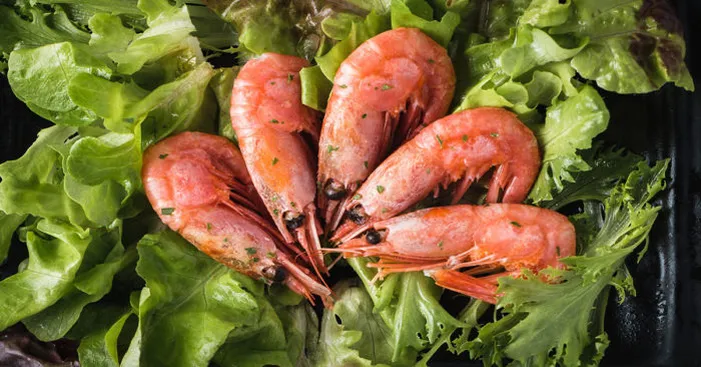
Royal red shrimp is among the hundreds of species that belong to the crustacean family.
Some species of shrimp live and eat all around the world and some of them get really big in size.
Among those species, one of them has a bright red color and may reach lengths of 9in (25cm), hence they are called royal red shrimp. (1)
You can either buy them fresh raw, frozen, cooked, or smoked and basically, every fish market has royal red shrimp on their shelves.
In this article, I am going to walk you through everything you need to know about royal red shrimp, a brief history, their characteristics, royal red shrimp benefits, how to prepare shrimp before cooking them, a selection of recipes you can try at home, and tips on how to buy.
Royal red shrimp history:
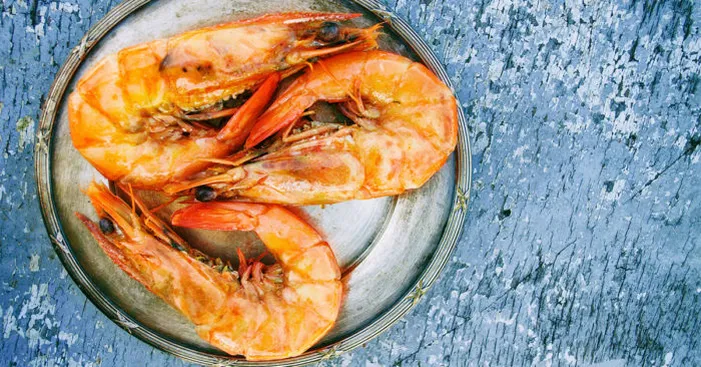
The first origin of royal red shrimp comes from the Ponto-Caspian region which is near the Black Sea and the Caspian Sea.
In the 1950s, this type of shrimp first made it to North America where they started farming for royal red shrimp and increasing their production mainly in Florida. (1)
This is probably due to the large ships that transport and fish in between the oceans which may have brought this type of shrimp to North America.
Royal red shrimp characteristics:

Royal is usually related to the big size, and it’s red! There couldn’t be any better name than Royal red for this type of shrimp!
They live in deep waters down to more than 1500ft and can grow up to 9 inches (25cm) in size. (2)
However, they are mostly creamy white in color with few red spots and can be a little darker depending on the environment.
The red spots in a royal red shrimp depend on its age as juveniles tend to have a lighter shade.
As for their taste, they have a sweeter flavor almost like that of a lobster, unlike other shrimp types.
Benefits of royal red shrimp:

Help you sleep:
Half a cup ½ of shrimp (6 shrimp) contain 21.4g of protein, just like sardines, and very close to pork and beef.
Those proteins have all the amino acids essential. (3)
They don’t just contribute to the relaxation process, they are also necessary for muscle building!
Help our neurological system functioning:
As they contain phosphor, which is necessary for teeth and bones health, they also participate in the formation of the neurons and prevent muscle contractions. (4)
A good replacement for people with lactose intolerance:
Eating 5 shrimp a day offer 7% of the daily value needed in calcium, which equals drinking 1/2 cup of milk or 1 ounce of white cheese. (5)
That makes shrimp a good replacement for people with lactose intolerance.
Help with Weight loss:
Shrimp are poor in fat and rich in proteins, which makes them good for weight loss!
Prevent Heart diseases:
Shrimp contain Omega-3, recently it was proven that omega-3, of marine origins, contributes significantly to heart functioning and prevents possible heart diseases.
According to Veronique Liegeois (professional nutritionist and author of bestselling books): “Shrimp are rich in Omega 3 and carotenoid.
These two substances help blood circulation and eliminate blood clots.” (6)
Protect from cancer:
Shrimp contain Astaxanthin, one of the most effective carotenoids facing cancer and chronic diseases. (7)
It’s the pigment responsible for the red color of salmon, shrimp, and other crustaceans.
It has antioxidant properties that surpass the ones found in Vitamin E and beta-carotene.
That makes it very effective against cancer and heart diseases.
Reduce blood pressure & LDL “bad” cholesterol:
Shrimp are full of Coenzyme Q10, a substance that acts similar to vitamin K and has the ability to reduce blood pressure.
CoQ10 also helps prevents the oxidation of LDL cholesterol (bad cholesterol).
Help with skin regeneration:
Prawns are an excellent source of phosphor.
Apart from its essential role in the formation of bones and teeth, it takes part in the skin regeneration process since it’s one of the substances that constitute the cellular membrane.
It also helps to maintain the same PH level in the blood.
Help produce more energy:
Shrimp come with Vitamin B3, which participate in many metabolic reactions and contribute essentially to the production of energy from carbs. (8)
It also takes part in DNA formation.
Help protecting our skin from radiations:
You would be amazed by the amount of copper and selenium that shrimp provide.
Copper is necessary for the hemoglobin production process.
It also takes part in the creation of collagen (a structural protein responsible for skin regeneration).
There are many other enzymes related to copper that helps our immunity system.
It’s not just copper, shrimp contain selenium too!
A portion of 3 ounces (5 shrimp) offers 100% of the daily value of Selenium which helps protect our skin against radiations. (9)
Other benefits of royal red shrimp:
- Strengthens the immune system.
- Reduces the risk of dementia and Alzheimer’s.
- Stabilizes the mood.
- Strengthens bones and teeth.
- Enhances thyroid gland performance.
- Reduces blood sugar levels.
- Improves fertility for men and increases their sperm production.
- Helps with erection and sexual performance.
Using royal red shrimp:
Most people enjoy royal red shrimp by boiling them in water for 5 minutes then they pull off the head and unpeel them.
Boiled shrimp combines well with mayonnaise, avocado, and lemon.
In addition, they can be fried or grilled with garlic and parsley and served as a side dish.
Whether you bought them from the market or caught them yourself, these next few tips may introduce you to new shrimp menus.
Is it better to cook them in the oven or on a pan? How to cook them if they are frozen or already peeled?
Here are few tips to make enjoy royal red shrimp the best way possible:
Preparing royal red shrimp:
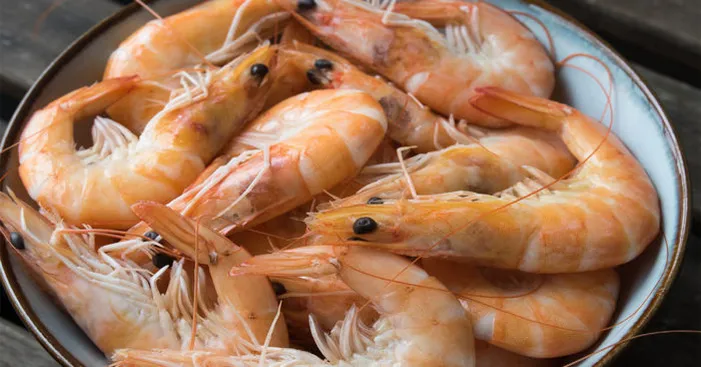
The first thing you need to do is to ensure that the royal red shrimp you have are fresh and have a beautiful creamy white color with a bright orange shade and a pleasant sea smell.
Next, is the answer to whether you should peel them before or after cooking: it depends on your recipe.
Some dishes require a longer cooking time, in this case, the peel may ensure that the fragile meat inside remains intact.
Also, peeling cooked royal red shrimp is so much easier than peeling them when they are raw.
However, you can peel them off before you cook them.
To do that:
- Start by removing the small legs, then cut off the head and keep the tail so it’s easier to grab on the shrimp.
- Now peel off the shell using your fingers and starting from the belly towards the back.
- Using a sharp knife make a small cut along the back of the shrimp, less than halfway in.
- You should see a brown vein that goes all along the back, remove that vein then cut off the tail.
- Rinse the peeled shrimp well in cold water and you’re done!
- You can also use the heads of the shrimp to add a sea taste to your stew or sauce recipe.
Baking royal red shrimp in the oven:
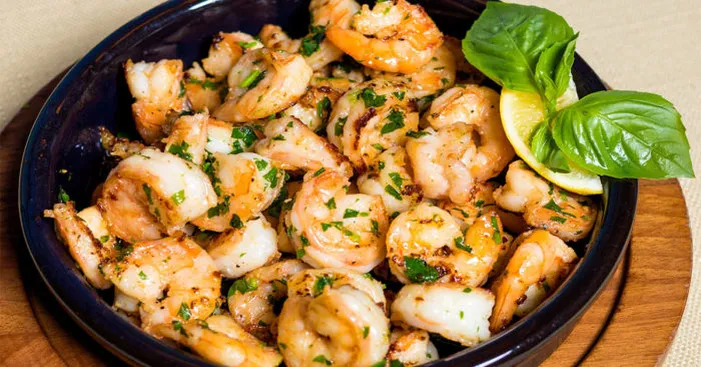
- Preheat the oven to 430°F (220°C).
- Place your cleaned shrimp in a bowl and sprinkle them with olive oil.
- Next, season them with salt and ground black pepper (about 1tbsp per 10 shrimp).
- Mix the shrimp well until each shrimp is covered in oil and spices.
- Using an oven tray, spread all the shrimp evenly so that no shrimp is on top of the other.
- Place the tray in the oven for 10 minutes and make sure you turn them to the other side halfway through the cooking time.
- When the meat of the shrimp becomes pink and opaque then they are well-done.
- Serve them on their own or with your main dish as a delicious side dish.
You can come up with your recipes by playing on the marinating spices.
For example, you can use other spices including lemon juice or lemon zest, chopped parsley, cayenne pepper, paprika, coriander, or rosemary.
Cooking frozen royal red shrimp:
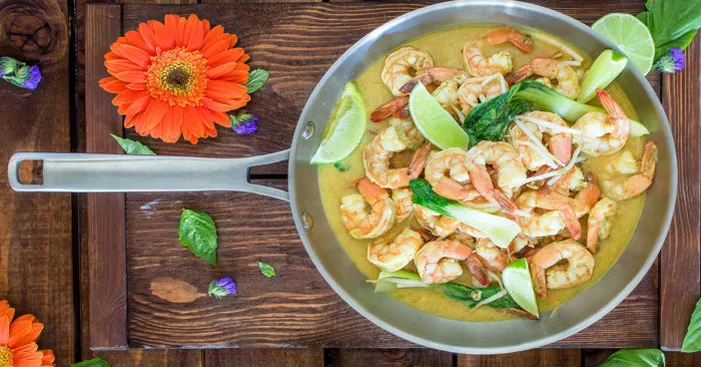
- Before cooking your frozen royal red shrimp, make sure you thaw them in the refrigerator for 2 hours.
- After thawing them in the refrigerator, place them in a bowl full of cold water for about 15 minutes.
- Then, drain the shrimp using a clean piece of cloth or a paper towel.
- Now you can make a very healthy shrimp dish by boiling them.
- Boil some water over medium heat.
- When the water starts boiling, plunge your royal red shrimp into it and add 1 tbsp of salt per 4 water cups.
- Add spices and herbs like lemon juice or lemon zest, chopped parsley, cayenne pepper, paprika, coriander, or rosemary to the boiling water.
- Let them boil and make sure you stir them regularly until you start seeing the shrimp floating.
- Depending on the size of your royal red shrimp the boiling should last between 3 to 8 minutes.
- Using a colander, drain the shrimp and serve them.
Royal red shrimp sautéed:
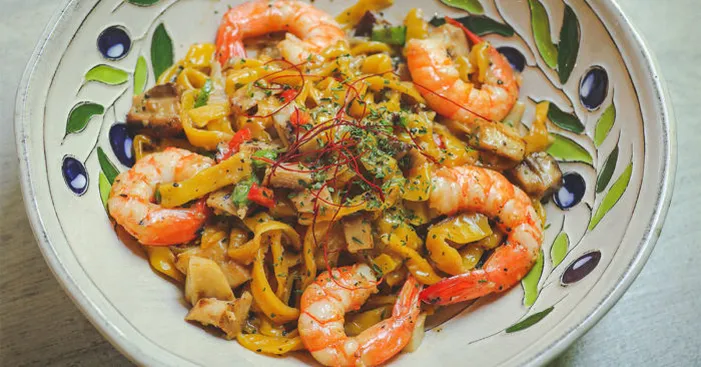
- Heat some olive oil in a frying pan just like the first step you do when you make potato.
- When the oil is hot and you see few bubbles coming to the surface, add your freshly cleaned shrimp and make sure they don’t overlap.
- Fry the shrimp for about 3 minutes until they turn pink and opaque.
- Add minced garlic and chopped parsley to the frying pan or any other spices of your choice.
- Flip them to the other side and let them fry for an additional 2 minutes.
- Remove them and enjoy your sautéed crunchy royal red shrimp immediately.
Buying royal red shrimp:
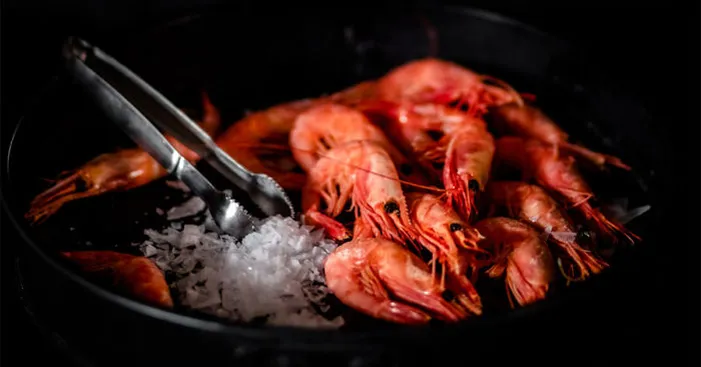
You can find royal red shrimp in every seafood market or department as they are liked by almost everyone.
First, To choose the best fresh ones, make sure they have a creamy white color with few shades of orange or red.
If you smell any unpleasant smell or the shrimp look slimy do not buy them as that means they are old or thawed after being frozen.
Instead, look for the ones that have a nice sea smell and with their heads still intact.
References:
(1): Alabama’s Crown Jewel: The Story of Royal Red Shrimp – Eat Alabama Seafood
(2): All About Royal Red Shrimp – How to Cook Royal Reds | Hank Shaw (honest-food.net)
(3): Microsoft Word – 13Foxaminoacidrequirements,Foxetal.,revised.doc (uanl.mx)
(4): Muscle high-energy phosphates in central nervous system disorders. The phosphorus MRS experience – PubMed (nih.gov)
(5): FoodData Central (usda.gov)
(6): Six bonnes raisons de manger des crevettes | Santé Magazine (santemagazine.fr)
(7): Multiple Mechanisms of Anti-Cancer Effects Exerted by Astaxanthin (nih.gov)
(8): Niacin – Health Professional Fact Sheet (nih.gov)
(9): FoodData Central (usda.gov)
